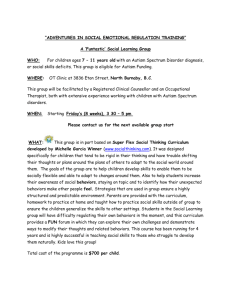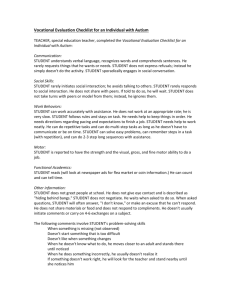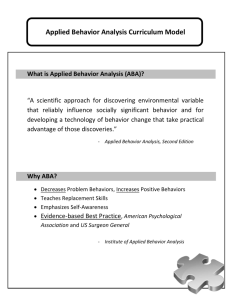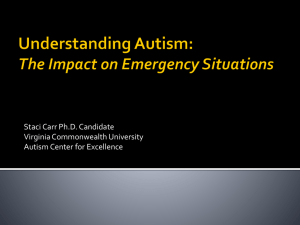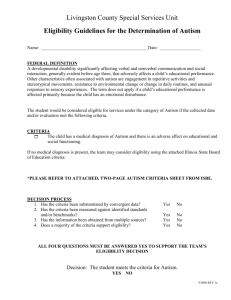Comparison in Dev`t between Typical Kids and/or Kids w/Delays
advertisement
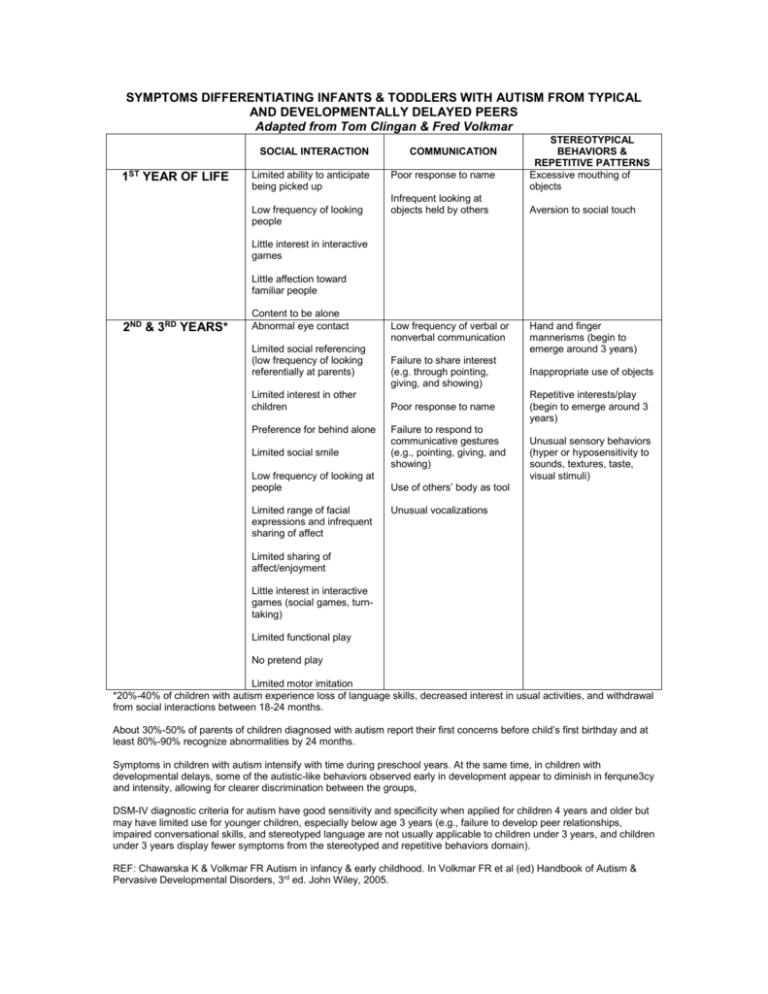
SYMPTOMS DIFFERENTIATING INFANTS & TODDLERS WITH AUTISM FROM TYPICAL AND DEVELOPMENTALLY DELAYED PEERS Adapted from Tom Clingan & Fred Volkmar 1ST YEAR OF LIFE SOCIAL INTERACTION COMMUNICATION Limited ability to anticipate being picked up Poor response to name Low frequency of looking people Infrequent looking at objects held by others STEREOTYPICAL BEHAVIORS & REPETITIVE PATTERNS Excessive mouthing of objects Aversion to social touch Little interest in interactive games Little affection toward familiar people 2ND & 3RD YEARS* Content to be alone Abnormal eye contact Limited social referencing (low frequency of looking referentially at parents) Limited interest in other children Preference for behind alone Limited social smile Low frequency of looking at people Limited range of facial expressions and infrequent sharing of affect Low frequency of verbal or nonverbal communication Hand and finger mannerisms (begin to emerge around 3 years) Failure to share interest (e.g. through pointing, giving, and showing) Inappropriate use of objects Poor response to name Repetitive interests/play (begin to emerge around 3 years) Failure to respond to communicative gestures (e.g., pointing, giving, and showing) Unusual sensory behaviors (hyper or hyposensitivity to sounds, textures, taste, visual stimuli) Use of others’ body as tool Unusual vocalizations Limited sharing of affect/enjoyment Little interest in interactive games (social games, turntaking) Limited functional play No pretend play Limited motor imitation *20%-40% of children with autism experience loss of language skills, decreased interest in usual activities, and withdrawal from social interactions between 18-24 months. About 30%-50% of parents of children diagnosed with autism report their first concerns before child’s first birthday and at least 80%-90% recognize abnormalities by 24 months. Symptoms in children with autism intensify with time during preschool years. At the same time, in children with developmental delays, some of the autistic-like behaviors observed early in development appear to diminish in ferqune3cy and intensity, allowing for clearer discrimination between the groups, DSM-IV diagnostic criteria for autism have good sensitivity and specificity when applied for children 4 years and older but may have limited use for younger children, especially below age 3 years (e.g., failure to develop peer relationships, impaired conversational skills, and stereotyped language are not usually applicable to children under 3 years, and children under 3 years display fewer symptoms from the stereotyped and repetitive behaviors domain). REF: Chawarska K & Volkmar FR Autism in infancy & early childhood. In Volkmar FR et al (ed) Handbook of Autism & Pervasive Developmental Disorders, 3rd ed. John Wiley, 2005.
